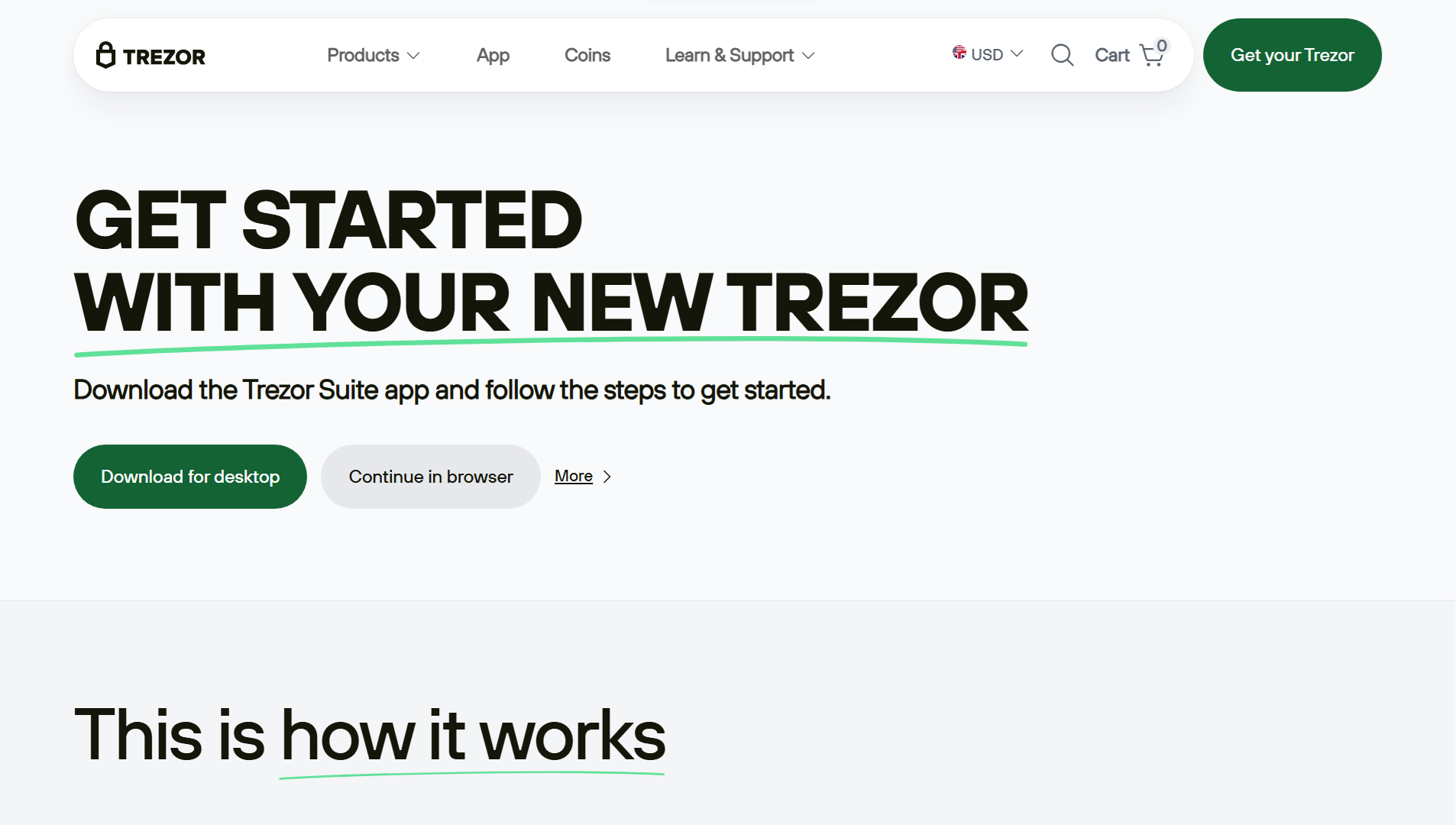Trezor Bridge — What It Is & How It Works

Trezor Bridge is a small, lightweight communication tool that allows your computer to securely interact with your Trezor hardware wallet. It acts as a connector between your web browser, desktop environment, and the Trezor device, ensuring they can exchange information safely without exposing your private keys.
It is officially developed by SatoshiLabs and is required for certain browsers and operating systems to recognize and communicate with Trezor devices.
1. What Trezor Bridge Does
Trezor Bridge performs one essential job:
✔ Enables communication between your Trezor hardware wallet and Trezor Suite Web or other compatible apps.
When you plug your Trezor device into your computer, the Bridge ensures that:
- The device is detected correctly
- Your browser can communicate with it
- Trezor Suite Web can read device status
- Firmware updates and operations run smoothly
- Crypto transactions can be approved securely
It does not handle private keys or sensitive data—those stay inside the hardware wallet.
2. Why Trezor Bridge Exists
Not all browsers support the communication protocols needed for hardware wallets.
To maintain compatibility across operating systems and browsers, Trezor Bridge was created as a universal link.
Bridge solves issues such as:
- Browser restrictions that block USB communication
- Missing drivers on older operating systems
- Limited WebUSB/WebHID support
- Security requirements that prevent direct hardware access
With Bridge installed, your hardware wallet can work reliably on almost any system.
3. When You Need Trezor Bridge
You need Trezor Bridge if:
- You are using Trezor Suite Web (the browser version)
- Your browser does not fully support WebUSB/WebHID
- You run into issues like “Device not recognized”
- You're on an older OS version
- You prefer using third-party compatible wallets through the browser
Browsers that typically benefit from Bridge:
- Firefox
- Safari
- Opera
- Older Chrome versions
- Browsers on Linux distributions
When you do not need the Bridge:
- You use Trezor Suite Desktop → It communicates directly with the device
- Your browser has full WebUSB/WebHID support → Bridge may be bypassed
4. How to Install Trezor Bridge
Installation is simple and fast.
Step 1: Visit the Official Trezor Website
Always type the address manually—avoid links from emails or random sites.
Step 2: Download Trezor Bridge
Select the version for your OS (Windows, macOS, or Linux).
Step 3: Install the Application
- Windows: Run the .exe file
- macOS: Install from the .pkg file and approve in Security & Privacy if needed
- Linux: Use the .deb or .rpm package provided
Step 4: Restart Your Browser
After installation, close and reopen your browser so it detects the Bridge.
Step 5: Connect Your Trezor
Plug in your device and visit Trezor Suite Web. It should now detect your hardware wallet.
5. How Trezor Bridge Keeps You Safe
While Bridge facilitates communication, it never handles sensitive data itself.
Its security principles include:
- ✔ Does not store private keys
- ✔ Does not access your recovery seed
- ✔ Works only as a local communication layer
- ✔ Developed and maintained by the official Trezor team
- ✔ Fully open-source and auditable
The hardware wallet remains the security core—Bridge is simply a communication helper.
6. Troubleshooting Trezor Bridge Issues
If your browser cannot detect your device even with Bridge installed, try the following:
✔ Restart your browser
Bridge may need a fresh session to connect properly.
✔ Reinstall or update Trezor Bridge
An outdated version may cause connection issues.
✔ Disconnect and reconnect your Trezor device
Try a different USB cable or port.
✔ Close competing apps
Some apps may try to access the USB device simultaneously.
✔ Disable conflicting browser extensions
Extensions that block USB communication can interfere.
✔ Install USB/udev rules (Linux)
Linux often requires additional device permissions.
If issues persist, using the Trezor Suite Desktop app bypasses Bridge entirely.
7. Do You Still Need Trezor Bridge Today?
It depends on your setup:
You DO need Bridge if:
- You prefer Trezor Suite Web
- You use browsers with limited WebUSB support
- You operate on older hardware/software
- You're on Linux systems without native hardware access configuration
You DO NOT need Bridge if:
- You use Trezor Suite Desktop
- Your browser supports WebUSB and works reliably
- You prefer fewer background services running
Although modern browsers are improving, Bridge remains essential for many users and ensures the broadest compatibility.
8. Summary
Trezor Bridge is a critical component for enabling smooth communication between Trezor hardware wallets and web-based applications. It ensures that:
- Your device is recognized
- Your transactions are executed securely
- Your browser and operating system can interact reliably
And importantly, it does all this without ever exposing your private keys or recovery seed.